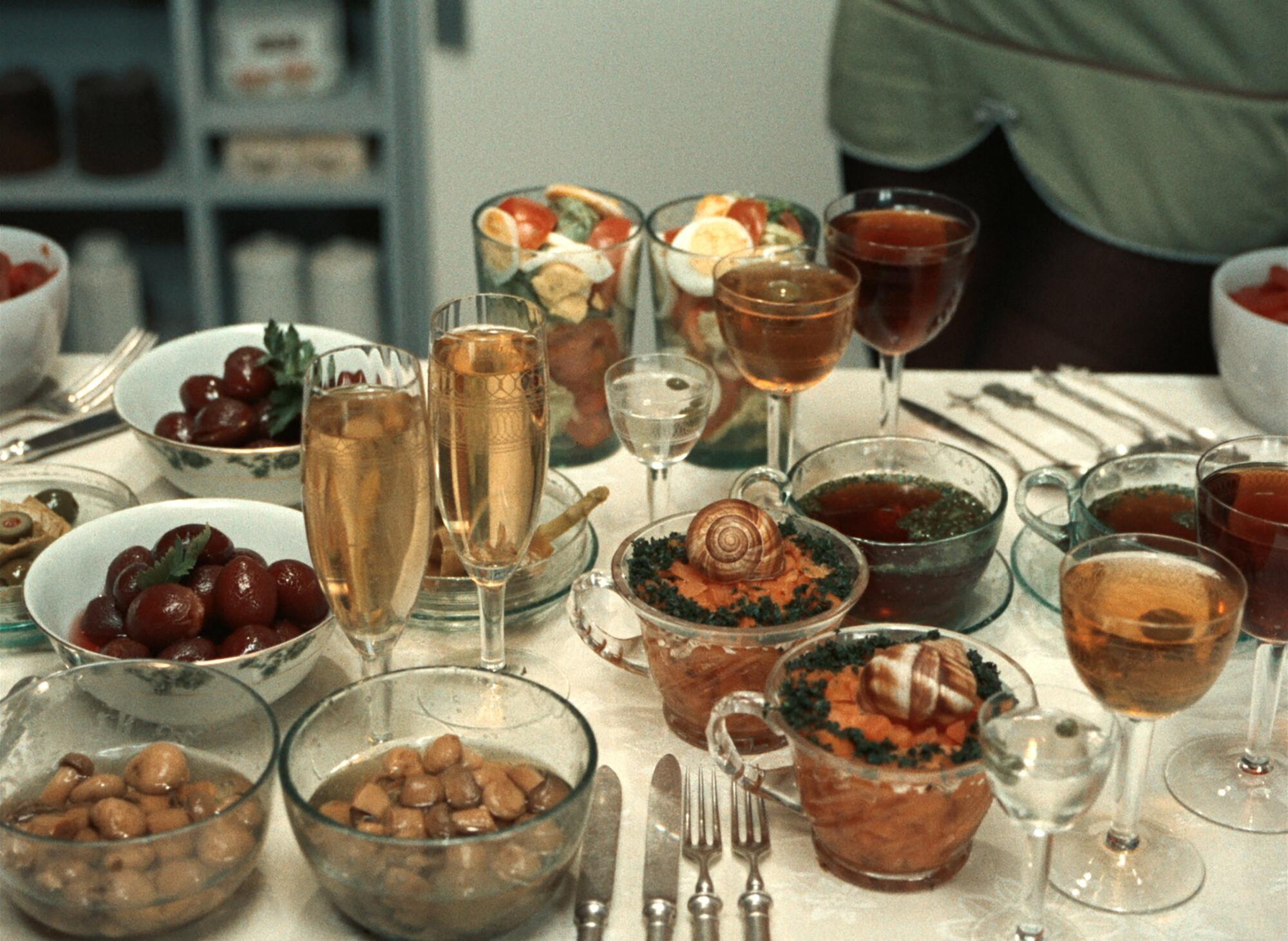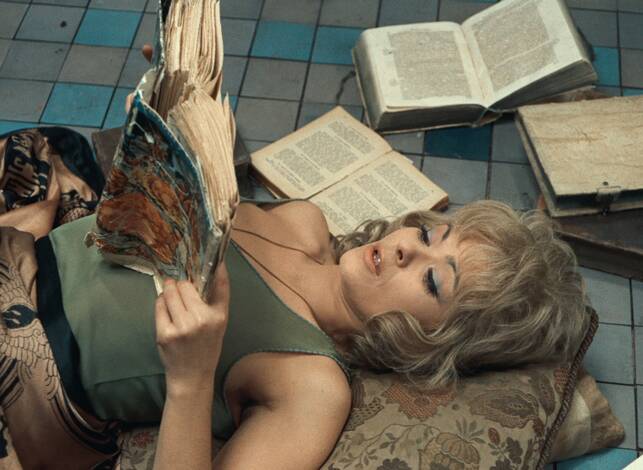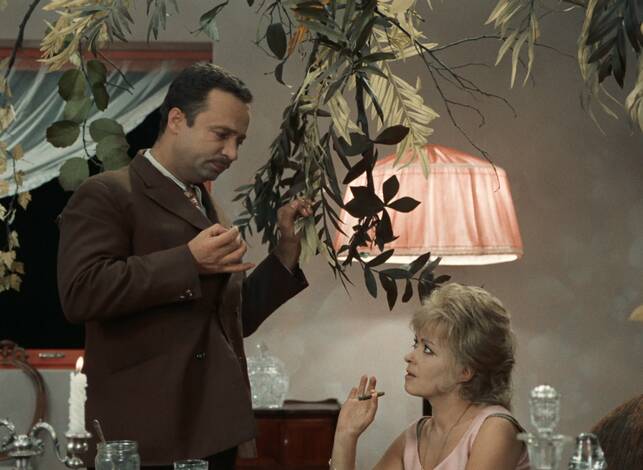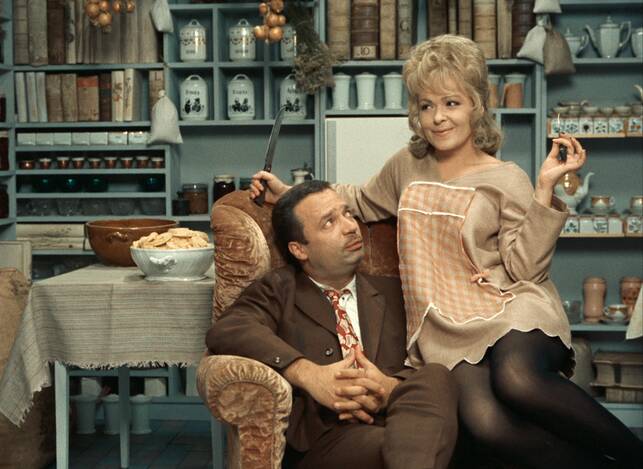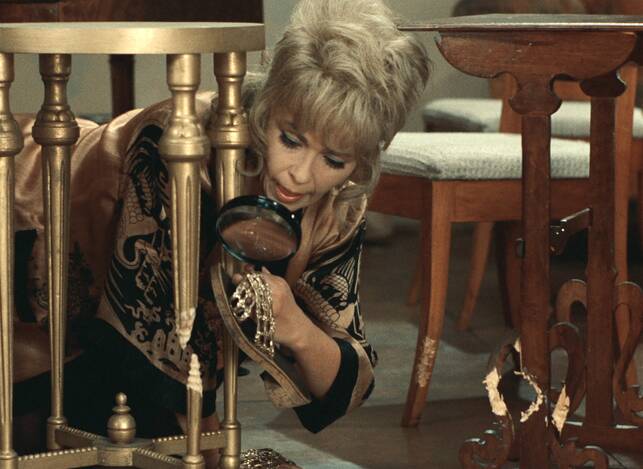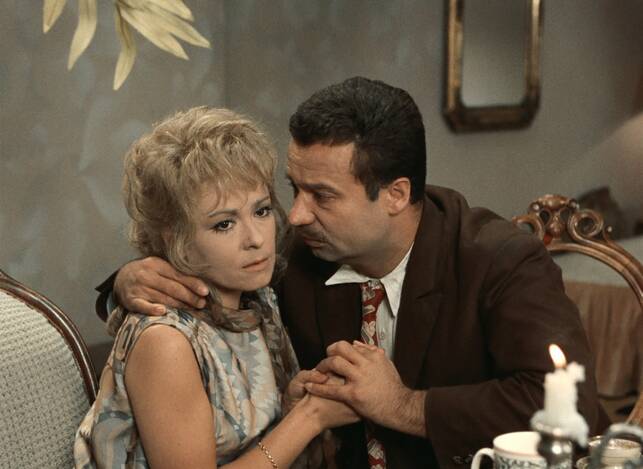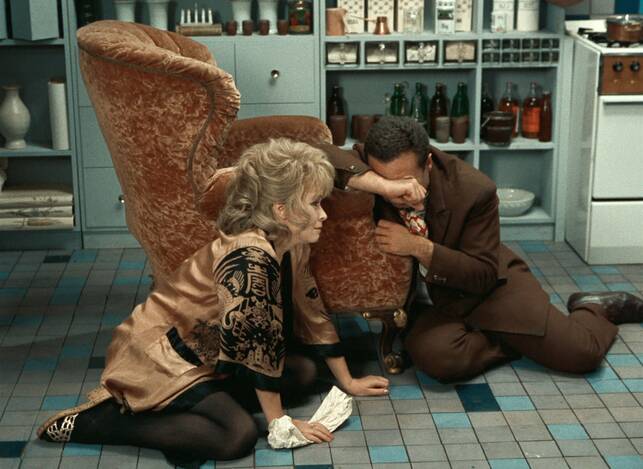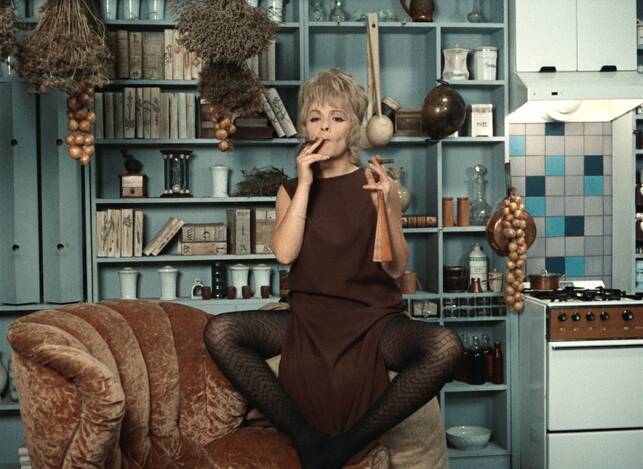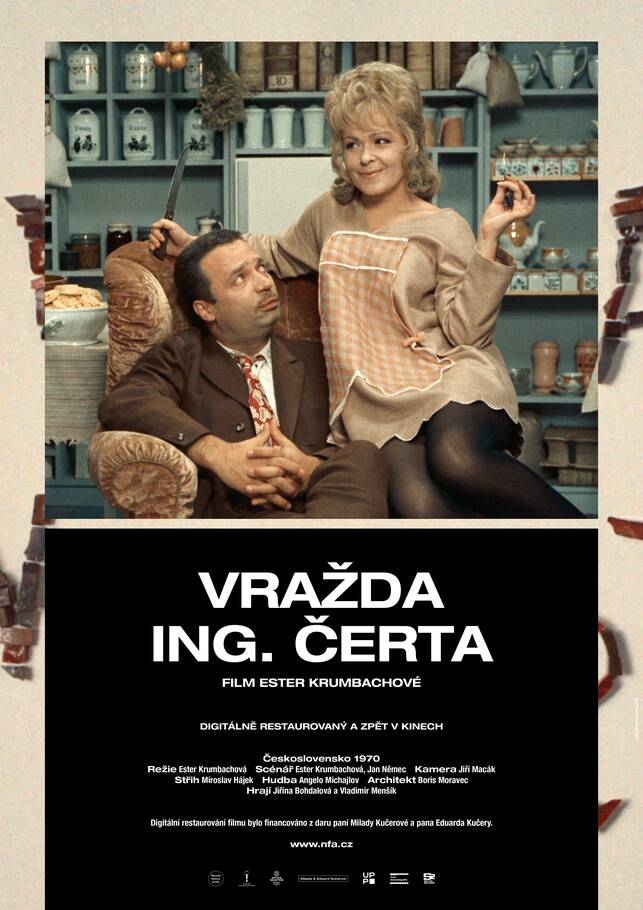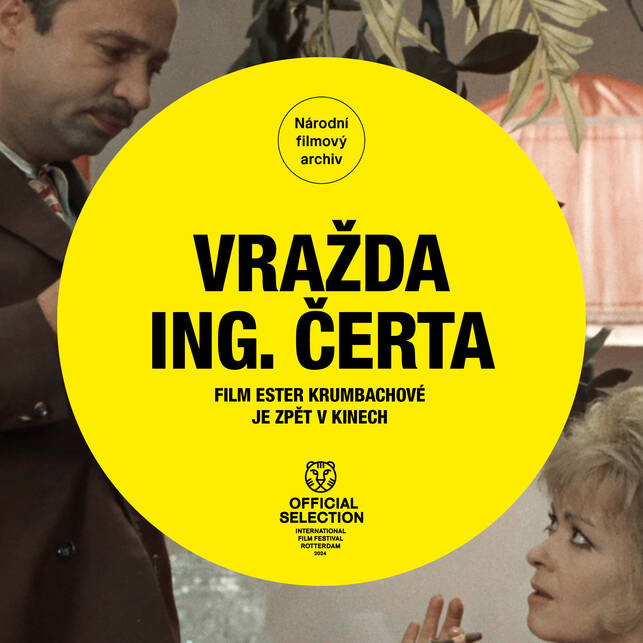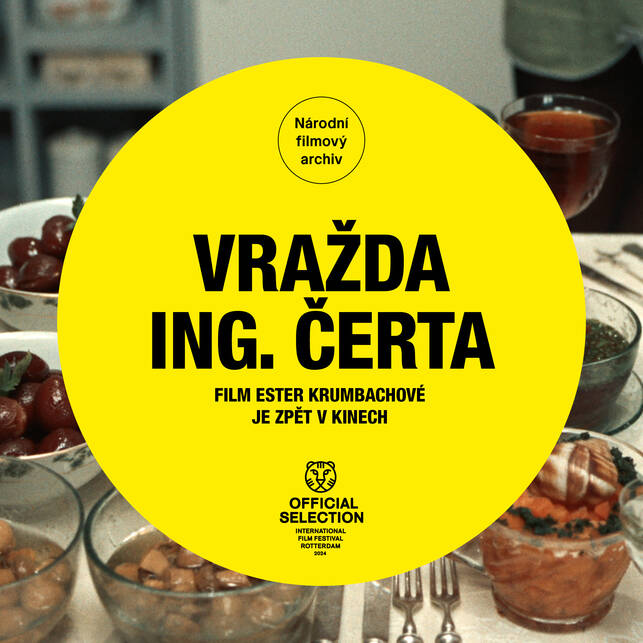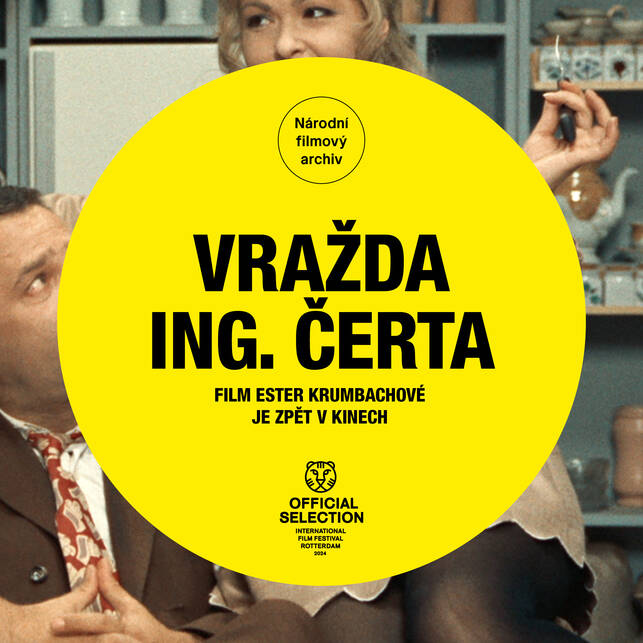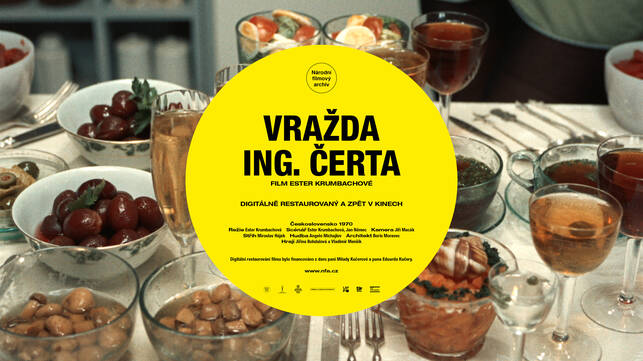Summary
Screenwriter and costume designer Ester Krumbachová entered the world of film directing just once, to create Vražda ing. Čerta (Murdering the Devil, 1970). The main reason why the highly original film remained her only motion picture was the cruel onslaught of post-1968 “normalisation” in the country. The author, who imbued numerous films of the Czechoslovak New Wave with a dynamic visual character through her visual designs, showed an affinity with the spirit of the 1960s through her scripts for Sedmikrásky (Daisies, 1966), Ovoce stromů rajských jíme (We Eat the Fruit of the Trees of Paradise, 1969) and Valerie a týden divů (Valery’s Week of Wonders, 1970). With the help of veteran screenwriter Jan Němec, Krumbachová also penned the script for Vražda ing. Čerta. The film is a complete and mature debut that includes the period’s feminism, fortified with a peculiar form of sinister criticism with which Krumbachová targets both sexes, much as did another female director, Věra Chytilová. The nameless central character of the narrative, a pretty, clever and refined fortysomething, referred to simply as She, strives to escape her loneliness through an association with Bohouš Čert (whose surname means “Devil”), a friend from her youth. However, he is not as she had remembered him: the slim youth has become an overweight, ill-mannered man whose prominent trait is excessive voracity (closely followed by excessive garrulity). She endures Čert’s visits only by holding on to the vision of an eventual marriage to which she is willing to sacrifice her own dignity. When it emerges that the insatiable glutton – who can’t resist taking bites out of furniture legs – is indeed the devil himself, She is forced to do away with the interloper with the help of a bag of raisins… Though Krumbachová contributed to numerous highly intellectual films of the 1960s (before adding Faunovo velmi pozdní odpoledne [Faun's Delayed Afternoon], directed by Chytilová in 1983), her film is a mannerist play about the battle of the sexes, depicting with ornamental flourishes the incompatibility of men and women. The main characters are mere pieces on a chessboard, but they come alive through masterful acting by Jiřina Bohdalová and Vladimír Menšík.
Read more

